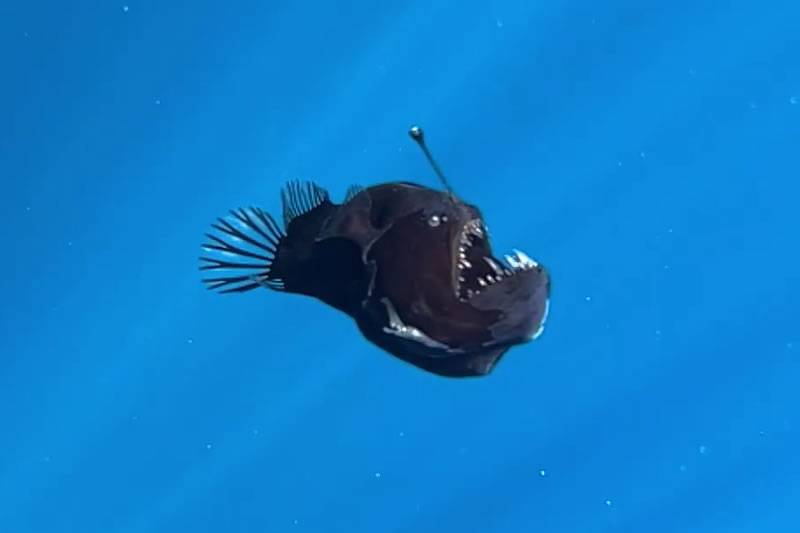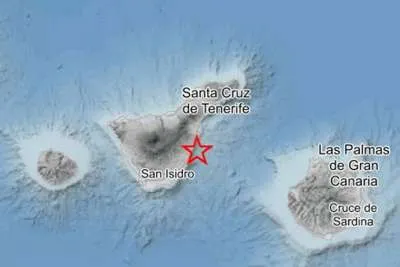VIDEO: Rare 'Black Devil' Anglerfish spotted near Tenerife coast in broad daylight
- 07-02-2025
- Tenerife
- Canarian Weekly
- Photo Credit: Condrik Tenerife
- Video Credit: Condrik Tenerife
A team of marine biologists from the NGO Condrik Tenerife have documented an extremely rare sighting of a deep-sea black devil anglerfish (Melanocetus johnsonii) in daylight near the surface, just two kilometres off the coast of Tenerife.
The sighting, which took place on 26th January near Playa San Juan on the west coast of the island, could be the first-ever recorded instance of a living adult black devil anglerfish being observed so close to the surface.
The deep-sea predator, usually found at depths of between 200 and 2,000 metres, was spotted by marine biologist Laia Valor during a research expedition on pelagic sharks. "We were returning to port when I saw something black in the water that didn’t look like plastic or debris. It seemed unusual," Valor told the EFE news agency. "We spent a couple of hours with it. It was in poor condition and only survived for a few hours."
A Once-in-a-Lifetime Encounter
Until now, only larvae or deceased adult specimens of this species had been recorded near the surface. The sighting is considered highly exceptional, though the exact reasons for the fish’s presence in shallow waters remain unclear.
"There could be thousands of reasons why it was there," Valor explained. "We simply don’t know. It’s an extremely rare and isolated sighting. While we can’t say it never happens, if it were more common, we would see it more frequently. This could very well be the first time it has ever been filmed in these conditions."
After the fish died, the research team carefully transported it in a water-filled container to the Museum of Nature and Archaeology (MUNA) in Santa Cruz de Tenerife for further study.
A Mysterious Deep-Sea Predator
The black devil anglerfish, a feared predator of the deep, uses its bioluminescent lure, filled with symbiotic bacteria, to attract prey in the pitch-black depths of the ocean, much like the eerie creature depicted in Finding Nemo.
The reasons behind this particular specimen’s unusual ascent to shallow waters remain speculative. Possible explanations include illness, powerful upwelling currents, or an attempt to escape a larger predator.
The discovery has sparked excitement within the marine biology community, providing a rare glimpse into one of the ocean’s most elusive creatures.
Other articles that may interest you...
Trending
Most Read Articles
Featured Videos
A Vision of Elvis Tenerife Promo
- 10-05-2025
Tenerife Travel Guide
- 13-12-2024
Live webcam from Lanzarote airport
- 13-12-2024




























































